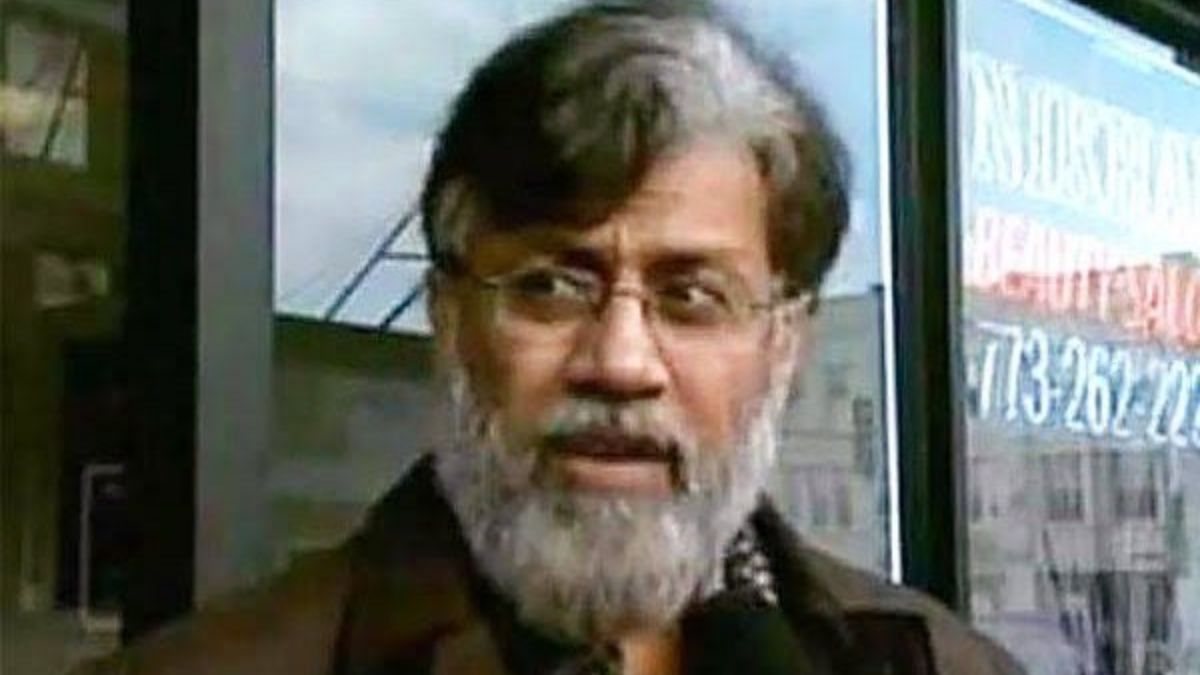Tahawwur Rana, who has been accused of playing a key role in the 2008 Mumbai terror attacks, is being extradited to India.
He is likely to land in the country tomorrow morning.
Notably, a team comprising officials from multiple Indian agencies recently travelled to the United States to bring back the man wanted in connection with the 26/11 attacks, several reports said quoting government sources.
ALSO READ | 26/11: When Ratan Tata stood on pavement outside Taj Hotel while hostages were rescued
The team is currently working with US authorities to complete the necessary paperwork and legal formalities.
In this report, we look at the plan to bring Rana back to India, the arrangements being put in place here, and what is expected to follow once he is brought to the country.
Inside the extradition plan
Tahawwur Rana , 64, who has a Pakistani background, is currently being held at the Metropolitan Detention Center in Los Angeles.
He is known to have ties with Pakistani-American Lashkar-e-Taiba (LeT) terrorist David Coleman Headley, one of the key conspirators of the 2008 Mumbai attacks that left 166 people dead.
According to The Indian Express, which cited sources in the Home Ministry, a delegation of three senior officers from the National Investigation Agency (NIA), along with three officials from intelligence agencies, travelled to the United States to take Rana into custody.
The team flew out on Sunday after receiving confirmation of a ‘surrender warrant’, which is a legal order allowing a fugitive to be handed over to another country, the report said.
Impact Shorts
More ShortsA special aircraft has been arranged to transport Rana and is expected to stop briefly at an undisclosed location before proceeding to New Delhi, India Today reported.
The operation is under the close supervision of National Security Advisor Ajit Doval, in coordination with senior officials from the NIA and the Ministry of Home Affairs, according to the report.
While the exact time of his arrival has not been shared by the authorities, officials have said that Rana could reach India “very soon”.
This major step comes just days after Rana’s final attempt to block his extradition. His emergency plea was turned down by justices of the US Supreme Court, paving the way for his return to India to face trial for the 26/11 attacks.
In his petition, Rana had asked for a stay on his extradition and surrender to India, pending the outcome of his legal appeals, including any final reviews.
He argued that sending him to India would breach US laws and the UN Convention Against Torture, stating “there are substantial grounds for believing that, if extradited to India, the petitioner will be in danger of being subjected to torture”.
“The likelihood of torture in this case is even higher though as petitioner faces acute risk as a Muslim of Pakistani origin charged in the Mumbai attacks,” the application stated.
What happens after Rana is brought to India?
External Affairs Minister S Jaishankar, speaking at the News18 Rising Bharat Summit , was asked about the extradition of the 26/11 Mumbai terror co-conspirator.
He said that India welcomes the decision by the American legal system.
“There is nothing new to add on Tahawwur Rana issue. We welcome the decision of the American legal process," he said.
According to The Times of India, two prisons, one in Delhi and the other in Mumbai, were discreetly instructed to make special arrangements in line with recommendations from the US judiciary regarding extradited individuals.
To begin with, Rana is expected to remain in the custody of the National Investigation Agency for the initial few weeks.
His arrival and the legal procedures that follow will be overseen by the agency, with senior Home Ministry officials monitoring the situation closely.
The NIA has already secured court orders to transfer the case from Mumbai to Delhi. Once Rana is brought to India and presented in court, the agency may request his custodial interrogation.
This will be the first occasion Indian authorities will question Rana. Back in June 2010, when an NIA team went to the US to question David Coleman Headley, Rana was not interviewed.
As part of the investigation, Rana will also be taken to Mumbai. This is where the attacks were carried out and where his immigration company, First World International, had set up a branch - used by Headley as a front during his reconnaissance trips.
Officials from the NIA are hoping to gather more details about the roles of conspirators based in Pakistan, as well as the involvement of personnel from the Pakistani army and the ISI who allegedly planned and funded the attacks, Hindustan Times reported.
Tahawwur Rana’s extradition to India
Rana was arrested in the United States in 2009 for involvement in terror-related activities, including a foiled plot to attack Danish newspaper Jyllands-Posten. He was also convicted in the US for providing material support to the terror group Lashkar-e-Taiba.
India had requested Rana’s extradition to stand trial for his alleged role in the Mumbai terror attacks that claimed the lives of over 166 people.
During a joint press conference with Prime Minister Narendra Modi at the White House in February, US President Donald Trump confirmed that his administration had approved the extradition of “very evil” Rana “to face justice in India”.
“Tahawwur Rana will be going back to India, where he will face justice," Trump said at the press conference alongside PM Modi.
The 2008 Mumbai terror attacks left a total of 166 people dead, including six Americans. Ten Pakistani terrorists carried out a coordinated assault across several iconic and strategic locations in Mumbai, holding the city under siege for more than 60 hours.
Rana’s extradition follows nearly two years of legal proceedings in the US. It was first approved by an extradition court in May 2023. He challenged the decision at various levels, eventually taking it to the doorstep of the US Supreme Court in November 2024.
With inputs from agencies
)